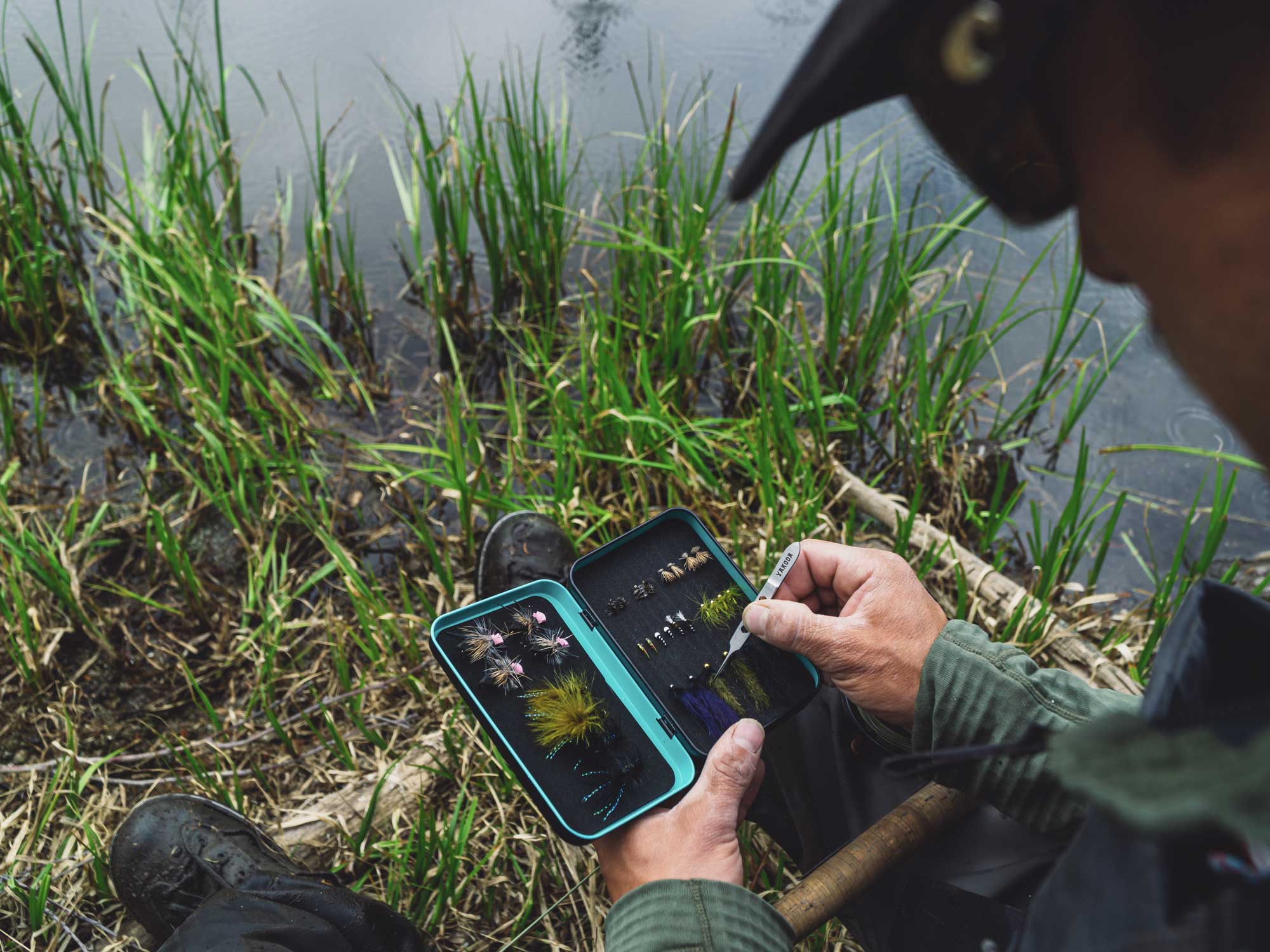Stillwater fishing conjures confusion for many anglers but excitement for those in know. Once you’ve cracked the stillwater code, nothing is more exciting than ice off and the magical months that follow on lakes, reservoirs, and ponds. With some knowledge, the path to becoming consistently productive at lakes can become more attainable.
Let’s start with a basic understanding of what stillwater is. By definition, these are bodies of water confined to a certain geographic spot. While they lack the running water typically associated with fly fishing, they’re rarely “still,” in that wind and other factors cause food sources, and therefore fish, to move around. Good stillwater fisheries are often full of vegetation that helps foster abundant bug life, resulting in a healthy habitat that grows beautiful, brightly colored trout.

If you want to have success on stillwater, there are a few simple things that will improve your chances of catching more fish.
Utilize your resources
- Plan ahead. Many stillwater fanatics are already planning their spring/summer hit list as their favorite lakes are freezing up. This is a great time to decide where you want to focus your efforts. Guidebooks like Steven Schweitzer’s A Fly Fishing Guide to Rocky Mountain National Park are full of useful tips and information for high country excursions—a valuable resource as you start checking off locations.

- Understand underwater topography. Before you fish a lake, it’s helpful to have an idea of what the structure below the surface might look like. Google Earth is an excellent tool to help locate drop-offs, shallow areas, and the general layout of a lake. Zoom in, pan out, and save screenshots of the lake so you can reference them up when you’re there. Large fish can be found at drop-offs on the edge of the littoral zone (shallows where vegetation tends to grow), while more active feeding fish can be found cruising the shallow water.
Embrace new philosophies
- Put the miles in. This can be on the trail or on the road—the farther you get away from easily accessed areas, the better your chances will be of catching more fish. Spend time preparing your backpack and supplies ahead of time, ensuring you have everything you need in potentially unpredictable conditions.
- Stop and observe your surroundings. Once you’ve made the hike or drive to your destination, take 5-10 minutes to just sit down and take note of what’s happening. You can learn a lot in a short amount of time. Fish could be rising, bugs could be emerging, and actively feeding fish could be cruising close enough to the bank for you to see them. These simple observations can help you plan how to fish the lake and set you up for a more successful day on the water.
- The Wind is your friend. It may sound counterintuitive but lake fishing only improves with wind as it helps move the water and your flies. The natural movement and twitches the wind adds to the presentation of your dry flies or nymph rig can trigger fish to eat. Of course too much wind can be a problem and you’ll want to be prepared to make good casts when the “W” starts howling. Keeping your casting simple is key— avoid unnecessary false casts to avoid frustrating wind knots and tangles.
Stillwater fishing is a great way to see new places, distance yourself from people, have fun, and connect with nature—and that’s what fly fishing is all about.
Next up, Part 2: Techniques and Bug Life



